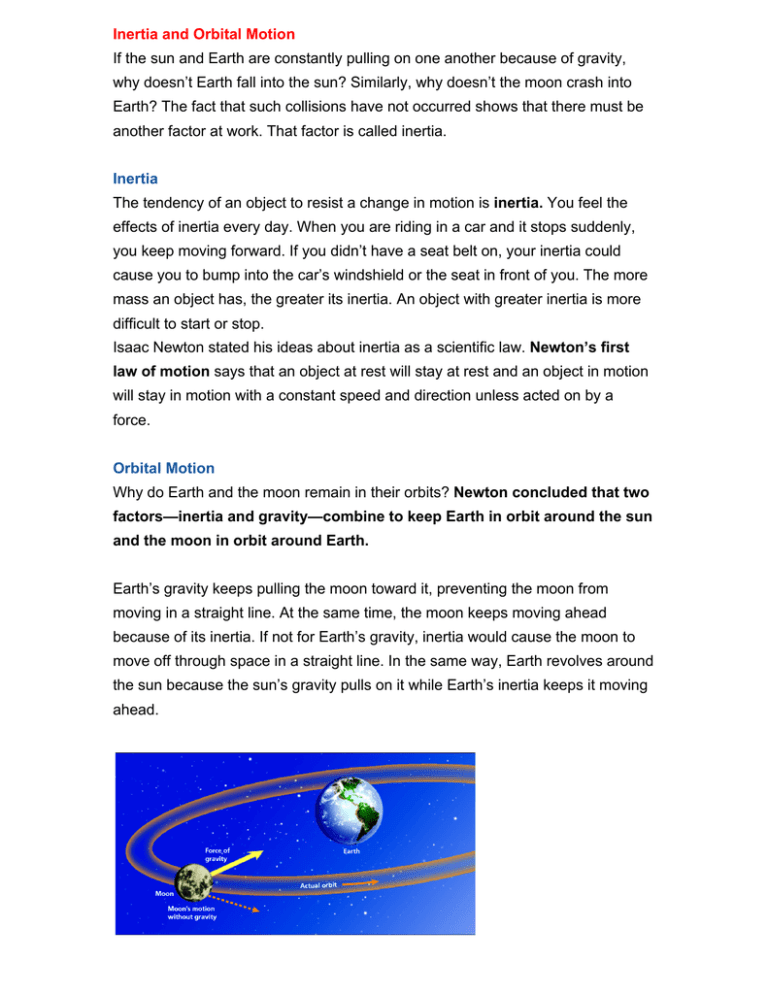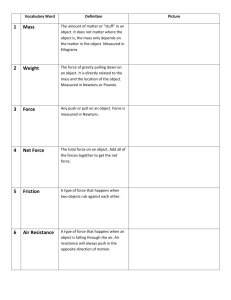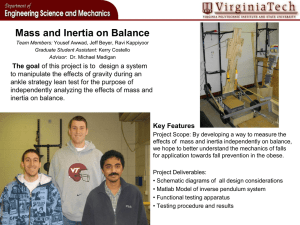Inertia and Orbital Motion
advertisement

Inertia and Orbital Motion If the sun and Earth are constantly pulling on one another because of gravity, why doesn’t Earth fall into the sun? Similarly, why doesn’t the moon crash into Earth? The fact that such collisions have not occurred shows that there must be another factor at work. That factor is called inertia. Inertia The tendency of an object to resist a change in motion is inertia. You feel the effects of inertia every day. When you are riding in a car and it stops suddenly, you keep moving forward. If you didn’t have a seat belt on, your inertia could cause you to bump into the car’s windshield or the seat in front of you. The more mass an object has, the greater its inertia. An object with greater inertia is more difficult to start or stop. Isaac Newton stated his ideas about inertia as a scientific law. Newton’s first law of motion says that an object at rest will stay at rest and an object in motion will stay in motion with a constant speed and direction unless acted on by a force. Orbital Motion Why do Earth and the moon remain in their orbits? Newton concluded that two factors—inertia and gravity—combine to keep Earth in orbit around the sun and the moon in orbit around Earth. Earth’s gravity keeps pulling the moon toward it, preventing the moon from moving in a straight line. At the same time, the moon keeps moving ahead because of its inertia. If not for Earth’s gravity, inertia would cause the moon to move off through space in a straight line. In the same way, Earth revolves around the sun because the sun’s gravity pulls on it while Earth’s inertia keeps it moving ahead.




